2016 Yamaha XSR900 First Ride Review
A neo-retro FZ-09 with modern electronics and sportier suspension
Think of the new Yamaha XSR900 as an FZ-09 that went backstage for a costume change and emerged for act II in disguise. In the process the XSR was also wired to perform some on-stage acrobatics of which the FZ is incapable. Ticket prices went up, but so did the bike’s technological accountability.
2016 Yamaha XSR900
| Engine | 18.75/20 |
| Suspension/Handling | 12.5/15 |
| Transmission/Clutch | 8.75/10 |
| Brakes | 8.25/10 |
| Instruments/Controls | 4.5/5 |
| Ergonomics/Comfort | 7.5/10 |
| Appearance/Quality | 7.5/10 |
| Desirability | 7.5/10 |
| Value | 9.0/10 |
| Overall Score | 84.25/100 |
We’ve been fanboys of the FZ-09 since its introduction in late 2013 as a 2014 model. The FZ had some initial teething problems such as inexcusably abrupt fueling (fixed), and too-soft suspension (not fixed), but its powerful three-cylinder engine, lightweight, and well-balanced chassis made for an exceptionally fun, do-anything motorcycle for a price that remains surprisingly affordable ($8,190).
More For Less: Aprilia Shiver 750 vs. Suzuki GSX-S750 vs. Yamaha FZ-09
The XSR900 retains all the elements we love about the FZ-09 while addressing the suspension issue with firmer spring rates and bringing to the table a host of modern electronics including ABS, traction control, as well as an assist-and-slipper clutch. The cost of these upgrades adds a notable $1,300 from the base model FZ to the base model XSR’s MSRP ($9,490 – Matte Gray/Aluminum, $9,990 – 60th Anniversary Yellow). The increased retail price also reflects the use of aluminum bits and pieces in place of the FZ’s plastic ones.
According to their respective spec sheets, the FZ and XSR are identical in terms of wheelbase (56.7 in), rake/trail (25.0°/103mm), and weight distribution (F 51.0/R 49.0). This goes a long in explaining why the two feel so similar to ride. The XSR does gain a few curb weight pounds (414 lbs vs 430 lbs) from the use of aluminum vs plastic, but the XSR remains as flickable as the FZ when flogging canyon roads. Yamaha says the XSR’s seating position weights the front end by way of canting the rider slightly further forward, but this adjustment does nothing to really change the front end’s characteristics. First-gear wheelies become routine whenever the stoplight switches from red to green, which is always fun. However, when aggressively riding the XSR through the countryside, the front end can easily become nervous when exiting a corner under power, especially if a bump in the pavement is introduced.
Yard Built Yamaha XSR700 Tracker By Bunker Customs
The light front end is more exciting than scary, and it could probably be tamed with a steering damper, but feedback from the front end is vague. One solution to curing the XSR’s front end’s lack of communication might be to purchase and install the accessory clubman bars, which exchanges the XSR’s standard seating position for a cafe racer one that certainly, uncompromisingly, weights the front end.
Improving the XSR’s handling are revised damping settings for the fork and shock, a longer shock spring, and the addition of longer, dual-rate fork springs. A much stiffer all-around motorcycle compared to the FZ’s sponge-cake settings, the XSR is better equipped for touching down all the wheelies you’ll be riding, as well as retaining better composure under hard braking and other aggressive riding maneuvers. Revised damping settings in the shock complement the XSR’s front end, making the XSR a sportier bike than its sportier-looking FZ counterpart.
2016 Yamaha Tracer 700 Announced For Europe; Expect to see it in the US as the FJ-07
According to Yamaha, “new ECU settings match the character of the bike.” Exactly what this means is a little vague, as no definitive explanation was given. What we can confirm is, like the FZ-09, the XSR offers three Ride Modes: A, Standard, and B, with very similar settings between the two platform mates, as in A being abrupt, Standard seemingly the best choice for pretty much all riding circumstances, and B just a letter in lieu for a Rain mode. Riding modes are chosen via a right-handlebar-mounted button, and can be switched while in motion.
Like the FJ-09 – the sport-touring edition of the FZ-09 – the XSR comes equipped with ABS and traction control. And, like the FJ, ABS is non-switchable while TC can be adjusted between 1, 2, and Off when the bike is not in motion. Unlike both the FZ or FJ, the XSR comes equipped with the latest trend in clutch technology, an assist-and-slipper clutch. Besides reduced clutch pull, the technology provides smoother downshifts while reducing the effects of reverse-engine torque through the drivetrain (see Yamaha explanation video here).
The interesting thing is, Yamaha chose the Sport Heritage version of the three (FZ, FJ, XSR) as the model to carry all these modern rider aids. Whether these modern accouterments will be attractive to the millennial biker tired of riding a cafe-customized XS750 remains to be seen, but XSR should at least be able to pull some millennials into dealerships with its industrial, bare-bones styling.
If Yamaha says the riding position is slightly more forward than the FZ-09, it can’t be by much and certainly not worth complaining about. The only problem I had with comfort is a seat that doesn’t provide much fore and aft movement, but worse are the tank cutouts that the inside of my knees were constantly resting against (I had the same problem with the tank cutouts on the Thruxton R). The adjustable front brake lever is a nice touch.
2016 Yamaha XSR900
+ Highs
- TC/Assist & Slipper clutch/ABS
- Improved suspension
- Wheelies galore
– Sighs
- Nervously light front end
- Uncomfortable fuel tank cutouts
- Fugly frame-mounted boxes
Besides a wallet-size compartment under the seat, the XSR lacks any storage, but also doesn’t provide any anchor points for easily attaching a bungee net. The XSR also carries over the same floppy blinker stalks found on the FZ and FJ models, but its use of aluminum instead of plastic in places like headlight and front fender brackets, rear fender, radiator shroud, fuel tank covers, and subframe is a nice styling exercise.
The XSR900 is the newest member of Yamaha’s expanding Sport Heritage segment of motorcycles that includes the Bolt C-Spec, SR400, and VMAX (that’s quite a disparity of performance!). Of the four, the XSR represents the most versatile among them, and the best bang-for-your-buck motorcycle outside Yamaha’s own FZ-09 or FZ-07. One thing that’s for certain, the growing range of models developed around the wonderful 847cc Triple powering the FZ, FJ, and XSR is a welcome expansion, serving the performance and styling needs of a growing variety of riders.
The 2016 XSR900 is a part of Yamaha’s corporate demo fleet. If your local dealer doesn’t have an XSR demo model, check out Yamaha’s Events website for a chance to take one for a spin. And just try to keep the front wheel down – we challenge you!
| 2016 Yamaha XSR900 | 2016 Yamaha FZ-09 |
|---|---|---|
| MSRP | $9,490 – Matte Gray/Aluminum $9,990 – 60th Anniversary Yellow | $8,190 (all colors) |
| Engine Capacity | 847cc | 847cc |
| Engine Type | Liquid-cooled DOHC inline 3-cylinder 4- stroke; 12 valves | Liquid-cooled DOHC inline 3-cylinder 4- stroke; 12 valves |
| Bore x Stroke | 78.0mm x 59.1mm | 78.0mm x 59.1mm |
| Compression | 11.5:1 | 11.5:1 |
| Fuel System | Yamaha Fuel Injection with YCC-T | Yamaha Fuel Injection with YCC-T |
| Transmission | 6-speed | 6-speed |
| Clutch | Multiplate assist-and-slipper wet clutch | Multiplate assist-and-slipper wet clutch |
| Final Drive | Chain | Chain |
| Front Suspension | 41mm inverted fork, adjustable preload and rebound damping; 5.4-in travel | 41mm inverted fork, adjustable preload and rebound damping; 5.4-in travel |
| Rear Suspension | Single shock, adjustable preload and rebound damping; 5.1-in travel | Single shock, adjustable preload and rebound damping; 5.1-in travel |
| Front Brakes | Dual 298mm discs | Dual 298mm discs |
| Rear Brakes | 245mm disc | 245mm disc |
| ABS | Dual electronic control ABS (front and rear controlled separately) | N/A |
| Front Tire | 120/70-17 Bridgestone Battlax S20R | 120/70-17 Bridgestone/Dunlop |
| Rear Tire | 180/55-17 Bridgestone Battlax S20R | 180/55-17 Bridgestone/Dunlop |
| Seat Height | 32.7 in | 32.1 in |
| Wheelbase | 56.7 in | 56.7 in |
| Rake/Trail | 25.0°/4.1 in | 25.0°/4.1 in |
| Overall Length | 81.7 in | 81.7 in |
| Overall Width | 32.1 in | 32.1 in |
| Overall Height | 44.9 in | 44.7 in |
| Curb Weight (Claimed) | 430 lbs | 414 lbs |
| Fuel Capacity | 3.7 gal | 3.7 gal |
| Colors | Matte Gray/Aluminum, 60th Anniversary Yellow | Armor Gray, Raven, Impact Blue |
| Warranty | One year | One year |
A former Motorcycle.com staffer who has gone on to greener pastures, Tom Roderick still can't get the motorcycle bug out of his system. And honestly, we still miss having him around. Tom is now a regular freelance writer and tester for Motorcycle.com when his schedule allows, and his experience, riding ability, writing talent, and quick wit are still a joy to have – even if we don't get to experience it as much as we used to.
More by Tom Roderick



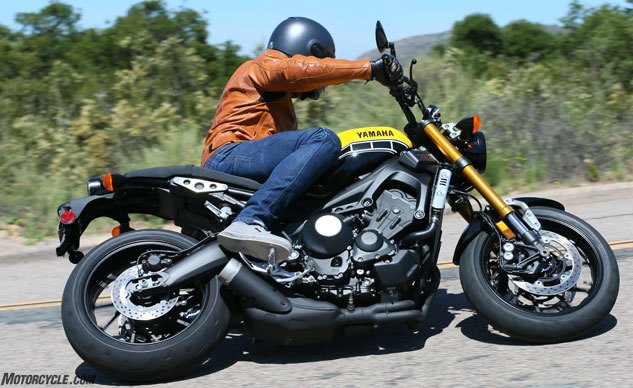
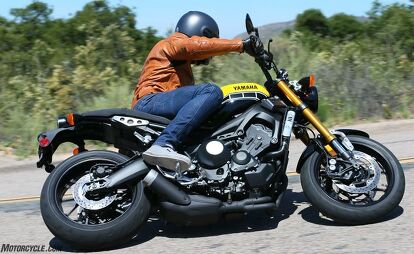




















































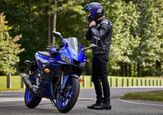
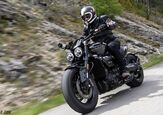
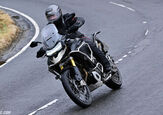
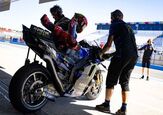


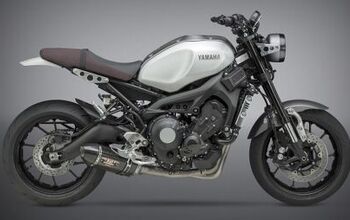
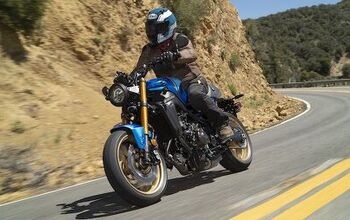
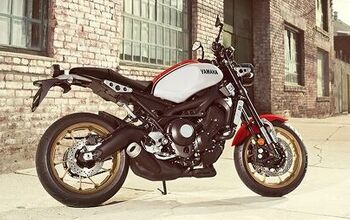
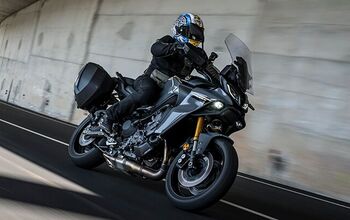
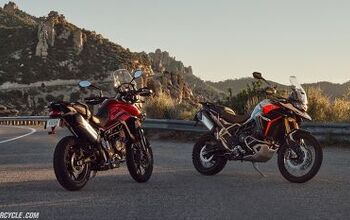
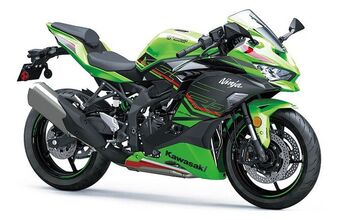
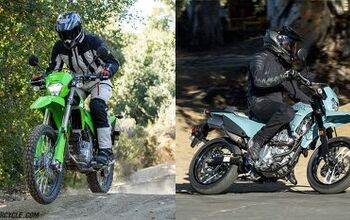

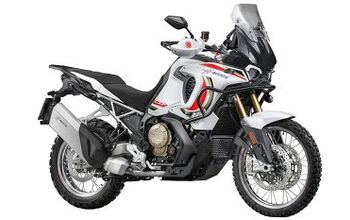
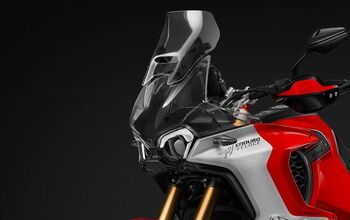
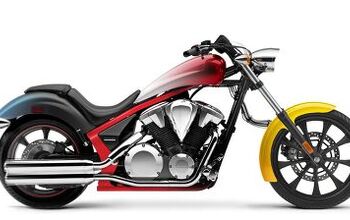

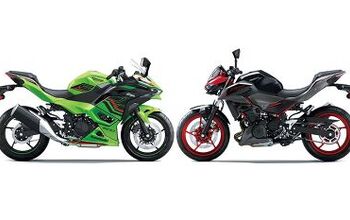
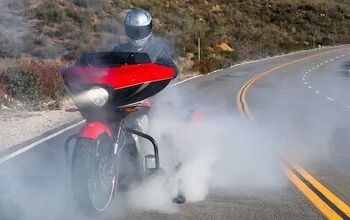
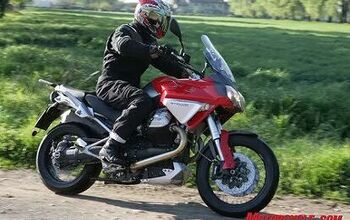
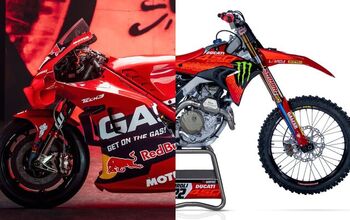

Comments
Join the conversation
"Whether these modern accouterments will be attractive to the millennial biker tired of riding a cafe-customized XS750 remains to be seen, but XSR should at least be able to pull some millennials into dealerships with its industrial, bare-bones styling." Guilty! Former customized '77 XS750 2D owner, Current XSR900 owner, age 30.
Why doesn't Yamaha give us an "R" version of this engine/frame combo that can go toe to toe with the Street Triple R on handling and braking (and blow it away in a straight line)? An FZ09R would be sick.